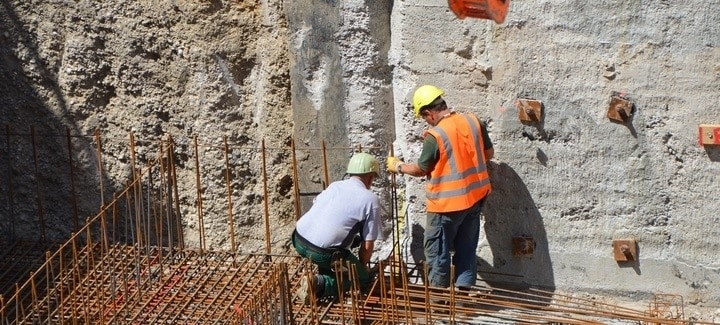When it comes to rental properties or any home, the foundation is essential because it strengthens the whole structure. That’s why inspecting the foundation is a key factor in property management. Neglecting foundation inspections can harm a building in the future and make it less of a good investment. Foundation inspections are an important aspect of handling and proudly owning a rental apartment.
As a landlord, you gain a lot from foundation inspections. They can help you identify certain defects before they turn into expensive and time-consuming repairs. They also give you the opportunity to check the property and confirm that it is being maintained in compliance with the rental agreement. Proper inspection and proactive maintenance can help you ensure that your property is in top shape, which is just one way to keep your renters satisfied.
Investing in early foundation inspections saves landlords money while also maintaining a reputation for responsible property management. Continue reading below, as this article sheds more light on why early foundation inspections can save your rental property.
Table of Contents
Subtle Signs of Foundation Issues
1. Uneven Floors
Watch out for less obvious floor problems like irregular or sloping, especially in a garage. Obvious floor problems, like apparent bulging or sinking, tend to catch a homeowner’s attention rather quickly.
Pay attention to signs of spongy or bouncy flooring, as they are another sign that there might be a problem with the support system, particularly in older homes. When floorboards feel more flexible in certain regions of your home than others, the supporting beams underneath them can weaken from wood decay, poor quality, excess moisture, or termite damage. You should coordinate with a local property manager in Philadelphia to schedule routine maintenance and avoid unexpected expenses.
There are several reasons why foundations fail, many of which are beyond a homeowner’s control. Most properties develop this problem due to an insufficient foundation built on unstable soil, although water damage or erosion, drought, earthquakes, and even strong wind can all negatively affect a structure’s foundation.
Since foundation damage and the cost of foundation repairs can escalate quickly, homeowners need to contact a professional at the earliest sign of concern.
2. Cracks in Drywall
Cracks in your drywall can be the most apparent sign of a foundation issue. Cracks can happen in numerous directions, ranging from small cracks to huge and deep gaps. However, you should examine any lateral, horizontal, or parallel cracks carefully, particularly if they are larger than an eighth of an inch, continue to expand, or maintain an unusual shape.
Discovering cracks in your walls can indicate problems with internal or exterior water build-up or earth moving. Cracks in the drywall may indicate a plumbing leak, but wrinkles in wallpaper, bowed or drooping walls and decaying materials could also indicate a foundation problem.
Regardless, remember that not all wall cracks indicate a foundation problem. Minor cracks can normally be attributed to the normal movement or “settling” of the drywall, but if you discover larger or deeper cracks, consult an experienced professional.
3. Leaky Basement
In the beginning, a leaky basement may appear to be a minor issue, but it can often be a subtle indicator of underlying foundation problems. While some landlords may take it as a typical incidence, repeated basement leaks could indicate that your property has foundational issues. Water leaking through openings in basement walls or flooring might be a sign of underlying structural problems or insufficient drainage near the foundation.
Ignoring those signs may also result in similar harm, just as the growth of mold, deterioration of the foundation, and weakened structural stability. Dealing with leaky basement concerns early with a professional inspection can help discover and repair any underlying foundation issues before they get out of hand, saving landlords money on repairs and preserving the long-term value of their rental property.
Why Early Foundation Inspections Save Big
Proactive Maintenance vs Reactive Repairs
Compared to expecting damage to appear before fixing it, getting normal foundation inspections early on is a proactive way to maintain your building. These inspections will let you avoid any foundation problems before they grow into highly-priced issues. This proactive technique ultimately saves you money while maintaining your home’s value and structural stability.
On the other hand, reactive upkeep can be costlier and unsettling, often arising from waiting till the signs of a foundation problem show up. If foundational issues are left unchecked, they may lead to water damage and structural troubles, setting your tenants up for danger. Delaying repairs may also necessitate extensive renovations down the line, causing vacancies and discontent amongst tenants and, in the end, hurting the owner’s finances.
Investing in early foundation inspections is a strategic technique that demonstrates accountable property management. As a landlord, you can save money, assure tenant happiness, and safeguard the strength of your properties by prioritizing preventive means over-reactive fixes. Generally, early foundation inspections allow homeowners to expect feasible issues, saving cash and reputation.
Final Thought
Homeowners must prioritize early foundation inspections for rental houses. This is a smart financial choice that will ultimately pay off. By figuring out and correcting foundation issues as quickly as possible, you can avoid expensive structural damage, maintain the value of your home, and ensure your tenant’s protection and satisfaction.
Homeowners must prioritize early foundation inspections for rental properties to make smart investments and take advantage of them in the future. By addressing any foundational issues promptly, you can avoid costly structural harm, maintain the value of your apartment, and ensure the safety of your tenants.










